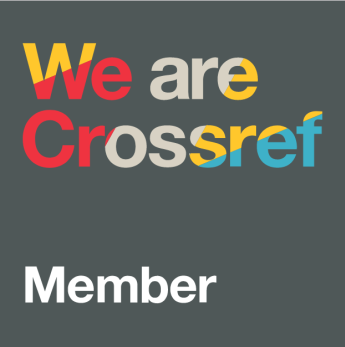Penggunaan Metafora dalam Bimbingan dan Konseling di Kalangan Siswa Sekolah Menengah Atas
DOI:
https://doi.org/10.22460/quanta.v7i2.4552Abstract
Implementing guidance and counseling in schools aims to help students actualize themselves. In self-actualization, students need to get to know and understand themselves. In reality, in the service process, students often find it difficult to convey thoughts, experiences, and feelings directly. The purpose of writing this article is to find out the benefits of communication metaphors for students in providing guidance and counseling services, especially in exploring students' needs. Through the Systematic Literature Review (SLR) research design, relevant literature is collected, identified, studied, evaluated, and interpreted. The number of journals studied consisted of seven journals, which were journals that met the inclusion criteria. The results of the research concluded that metaphors in services can help students who have difficulty describing difficult experiences, and expressing thoughts and feelings through techniques such as writing and interviews. The results of the worsening metaphor also lead to changes in behavior for the better. The results of the study have implications as material for study in the field of guidance and counseling related to efforts to help students channel their needs, convey difficulties, and learn new behaviors to achieve optimal development.
References
Bennett, E. D., Le, K., Lindahl, K., Wharton, S., & Weng Mak Bennett, T. (2017). Five Out of the Box Techniques for Encouraging Teenagers to Engage in Counseling.
Chen, K. H. (2016). Linking metaphors of the future with socio-cultural prospects among Taiwanese high school students. Futures, 84, 178–185. https://doi.org/10.1016/J.FUTURES.2016.03.013
Donertas, A. D. (2023). Student Metaphors. In M. E. Camargo (Ed.), Academic Research & Review in Social, Human and Administrative Sciences (pp. 47–74). Global Academy.
Farozin, M., Suherman, U., Triyono, Purwoko, B., Hafina, A., Yustiana, Y. R., Budiman, N., Wahyuni, E., & Sugiyanto. (2016). PANDUAN OPERASIONAL PENYELENGGARAAN BIMBINGAN DAN KONSELING SEKOLAH MENENGAH ATAS (SMA). Ditjen Guru dan Tenaga Kependidikan Kemdikbud.
Hurlock, E. B. (1991). Psikologi Perkembangan Suatu Pendekatan Sepanjang Rentang Kehidupan. Penerbit Erlangga.
Lengelle, R., Meijers, F., & Hughes, D. (2016). Creative writing for life design: Reflexivity, metaphor and change processes through narrative. Journal of Vocational Behavior, 97, 60–67. https://doi.org/10.1016/J.JVB.2016.07.012
Lynch, H. L., & Fisher-Ari, T. R. (2017). Metaphor as pedagogy in teacher education. Teaching and Teacher Education, 66, 195–203. https://doi.org/10.1016/J.TATE.2017.03.021
MacArthur, F., & Alejo-González, R. (2024). Beyond idioms, the use of metaphor in ELF academic settings: A comprehensive review. Journal of Pragmatics, 219, 48–57. https://doi.org/10.1016/J.PRAGMA.2023.11.002
Marcovitz, D. E., Maruti, S., Kast, K. A., & Suzuki, J. (2021). The Use of Therapeutic Metaphor on an Addiction Consult Service. Journal of the Academy of Consultation-Liaison Psychiatry, 62(1), 102–108. https://doi.org/10.1016/J.PSYM.2020.09.003
Okoli, C., Schabram, K. (2010). A Guide to Conducting a Systematic Literature Review of Information Systems Research . Sprouts: Working Papers on Information Systems, 10(26). http://sprouts.aisnet.org/10-26
Qiu, H., Watson, B., & Tay, D. (2022). Metaphors and trauma: An image schematic analysis of symptom-specific metaphors. Lingua, 271, 103244. https://doi.org/10.1016/J.LINGUA.2022.103244
Samur, D., Lai, V. T., Hagoort, P., & Willems, R. M. (2015). Emotional context modulates embodied metaphor comprehension. Neuropsychologia, 78, 108–114. https://doi.org/10.1016/J.NEUROPSYCHOLOGIA.2015.10.003
Sunaryo, K., dkk (2007). Rambu-Rambu Penyelenggaraan Bimbingan dan Konseling dalam Jalur Pendidikan Formal. Ditjen Peningkatan Mutu Pendidikan dan Tenaga Kependidikan Departemen Pendidikan Nasional.
Tay, D., (2018) Metaphors of Movement in Psychotherapy Talk. Journal of Pragmatis, https://doi.org/10.1016/j.pragma.2017.12.009
Tay, D. (2016). Metaphor and Psychological Transference. Metaphor and Symbol, 31(1), 11–30. doi:10.1080/10926488.2016.1116903
Tay, D. (2012). Applying the notion of metaphor types to enhance counseling protocols. Journal of Counseling & Development, 90, 142–149.
Triandini, E., Jayanatha, S., Indrawan, A., Putra, G. W., Iswara, B., (2019). Metode Systematic Literature Review untuk Identifikasi Platform dan Metode Pengembangan Sistem Informasi di Indonesia. In Indonesian Journal of Information Systems (IJIS (Vol. 1, Issue 2). https://www.google.com
Wagener, A. E. (2017). Metaphor in Professional Counseling. The Professional Counselor, 7(2), 144–154. https://doi.org/10.15241/aew.7.2.144
Wegner, E., Burkhart, C., Weinhuber, M., & Nückles, M. (2020). What metaphors of learning can (and cannot) tell us about students’ learning. Learning and Individual Differences, 80, 101884. https://doi.org/10.1016/J.LINDIF.2020.101884
Xlao, Y., Watson, M., (2019). Guidance on Conducting a Systematic Literature Review. Journal of Planning Education and Research, 39(1), 93-112. https://journals.sagepub.com/doi/10.1177/0739456X17723971
Zhang, X., Zhang, L., Yu, F., & Zhang, W. (2023). Can Brain Activities of Guided Metaphorical Restructuring Predict Therapeutic Changes? Neuroscience, 531, 39–49. https://doi.org/10.1016/J.NEUROSCIENCE.2023.08.031
Downloads
Published
How to Cite
Issue
Section
License
Copyright (c) 2023 Azni Nurul Fauzia, Tiara Agustine

This work is licensed under a Creative Commons Attribution-ShareAlike 4.0 International License.
Quanta: Jurnal Kajian Bimbingan dan Konseling dalam Pendidikan is licensed under a Creative Commons Attribution-ShareAlike 4.0 International License. Authors who publish with the Quanta Journal agree to the following terms:
- Authors retain copyright and grant the journal right of first publication with the work simultaneously licensed under a Creative Commons Attribution License that allows others to share the work with an acknowledgment of the work's authorship and initial publication in this journal.
- Authors are able to enter into separate, additional contractual arrangements for the non-exclusive distribution of the journal's published version of the work (e.g., post it to an institutional repository or publish it in a book), with an acknowledgment of its initial publication in this journal.
- Authors are permitted and encouraged to post their work online (e.g., in institutional repositories or on their website) prior to and during the submission process, as it can lead to productive exchanges, as well as earlier and greater citation of published work.



























